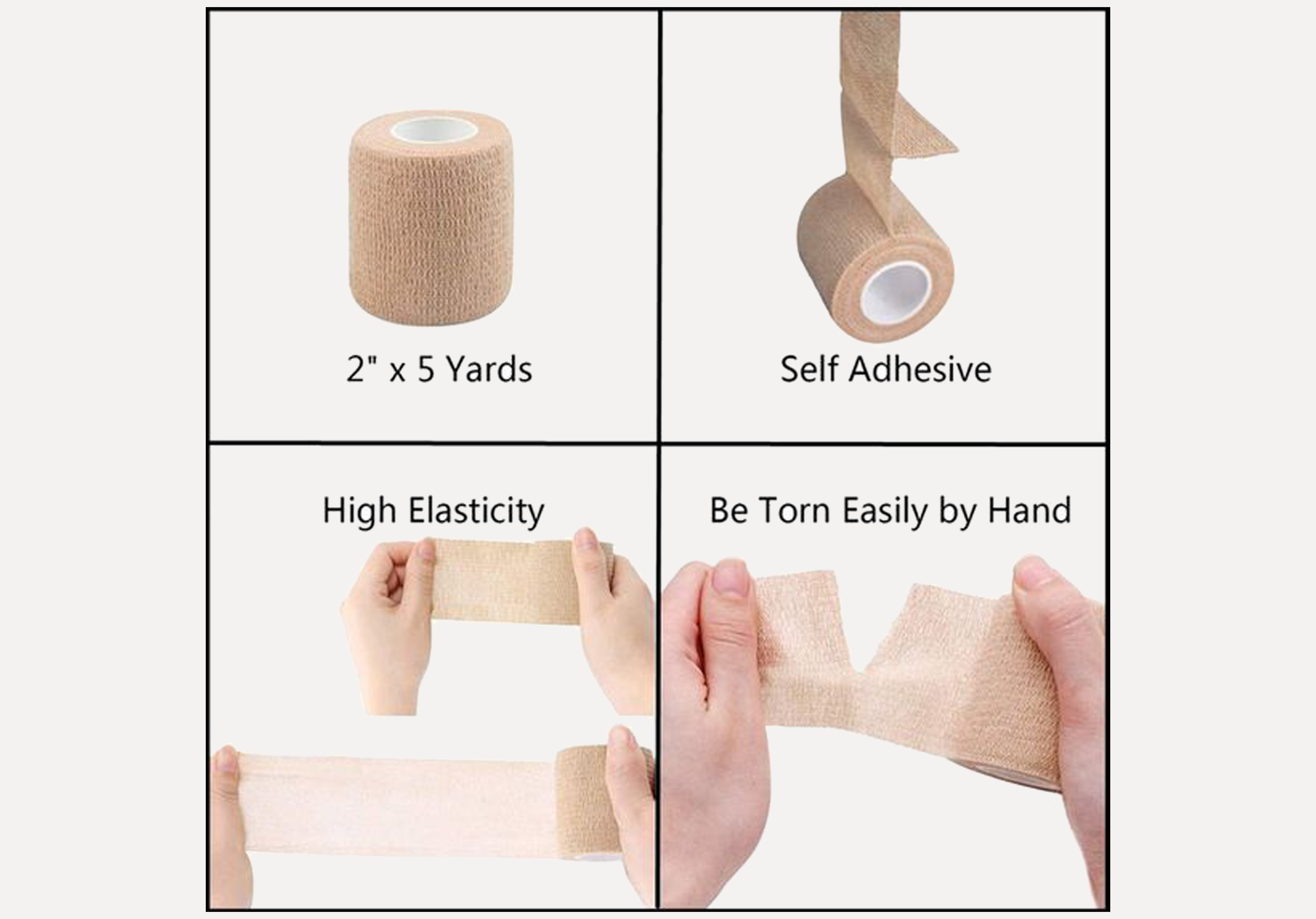A medical self-adhesive elastic bandage is a kind of cotton material that is very soft to the touch and has high elasticity, which is very suitable for clinical and surgical operations. For wound treatment and other issues, self-adhesive elastic bandages can make up for the lack of tension in tissues and organs and play a specific role in fixing. Timely and correct use can compress and stop bleeding, reduce infection and relieve pain.
Wound compression therapy
We often find that wounds in the hospital are usually bandaged very tightly. Even with thick gauze and cotton pads, blood will continue to seep out, and even shock will occur. Why?
It is not difficult to explain that depression will be formed on the wound surface to form a cavity after the human body is injured. The blood cannot be effectively stopped if the wound surface is directly covered with gauze and a cotton pad for pressure. The correct way is to fill the defect cavity with alginate dressing, let the sealed alginate dressing be slightly higher than the surrounding skin, and finally use a self-adhesive elastic bandage for pressure dressing so that the sauce can effectively compress the wound surface and lift the wound to hemostasis.
Compression therapy for joint injuries
Joint injury is a common injury in daily life. Suppose a human joint exceeds the maximum range of motion under the action of external force. In that case, the muscles and ligaments around the joint will be pulled, resulting in redness, swelling, pain, and inability to move normally. When the soft tissue is damaged, the subcutaneous capillaries are broken one after another, and the blood overflows from the veins, which requires compression therapy with bandages.
Preparing for Bandage Compression Therapy:
1. Choice of elastic bandage: You can choose a self-adhesive elastic bandage of cotton material, wider bandages (1.5-3 inches) are easier to use.
2. Extra padding: Additional padding can be added for support or gauze pads on both sides before bandaging.
3. Bandage placement: The self-adhesive bandage should be wound from the farthest end. When wrapping yourself, you can put the application on the inside of yourself, which will be more convenient; if you are covering others, it is more convenient to put it on the outside of the joint.
Compression dressing with self-adhesive elastic bandages:
1. Using the ankle as an example, place the end of the bandage where the toe meets the foot. Start by wrapping the application around the sole, holding the end of the application against the sole with one hand, and covering the other hand from the outside. Keep the winding tight enough so as not to impede blood circulation, and ensure that each winding overlaps the previous layer by about 50%.
2. Wrap the sole twice to hold it in place, then start to slowly move towards the ankle, making sure that the bandage overlaps the previous layer by no less than 50%. Also, make sure that the layers of plaster are smooth and do not have unnecessary raised folds. If the unevenness is found, it needs to be rewound.
3. When wrapped around the ankle, pull the end of the bandage up to the outside of the foot, then around the instep and inside of the ankle, through the heel and again around the instep, through the arch, and around the ankle. Repeat this movement several times to ensure complete stability of the ankle.
4. The final bandaging position should be higher than the ankle, which will help the stability of the ankle. Use metal fasteners or medical tape to secure remaining bandages or tuck excess applications into the final dressing layer.
Notes on Self-Adhesive Elastic Bandages:
1. If there is tingling numbness in the wound, pay attention to whether the bandage is too tightly wrapped and immediately untie and re-bandage.
2. It is necessary to untie the bandages and rest for half an hour every day to allow the blood to circulate.
Aditor: kiki Jia
Date: May25,2022

 English
English عربى
عربى Español
Español русский
русский 中文简体
中文简体








